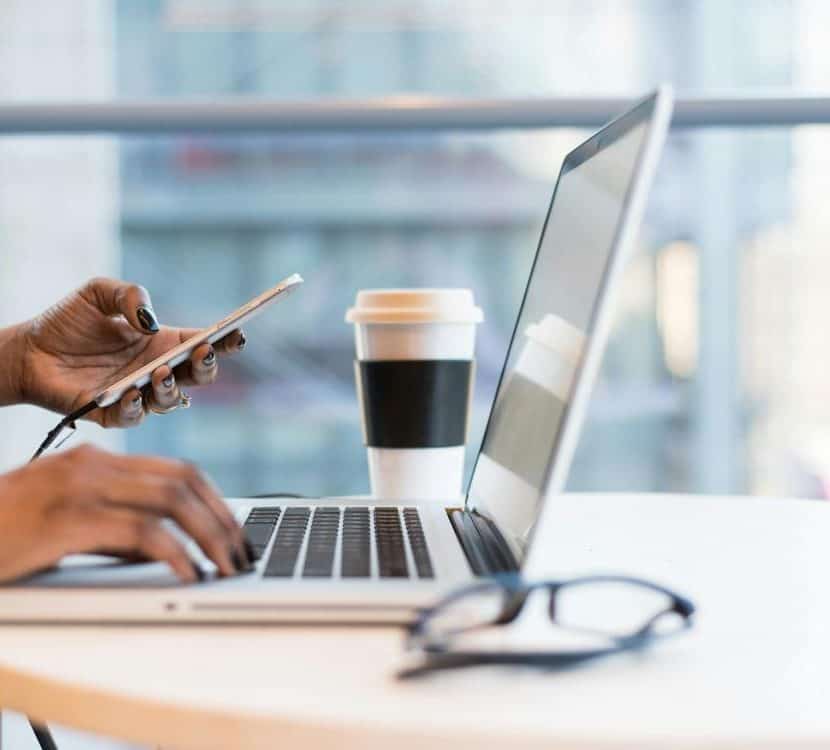The Hidden Dangers Lurking Inside Your Laptop
Using computers can put physical strain on your hands, eyes, neck, and spine. Ergonomic risks aren’t limited to desktop computers, either: touchscreen laptops tempt users into awkward postures that can cause injury. Malware, including remote-access Trojans, can take control of your device to steal data or enslave it in a botnet. And, of course, laptops

Using computers can put physical strain on your hands, eyes, neck, and spine. Ergonomic risks aren’t limited to desktop computers, either: touchscreen laptops tempt users into awkward postures that can cause injury.
Malware, including remote-access Trojans, can take control of your device to steal data or enslave it in a botnet. And, of course, laptops are easy targets for theft.
1. Dust and Grime Buildup
Dust particles can build up on a laptop’s keyboard, ports, and fans, eventually reducing the machine’s performance and lifespan. A regular cleaning routine can eliminate this issue and keep the machine running smoothly, and is generally involving disassembly of the laptop.
The microscopic particles that comprise dust can be blown in by a laptop’s fans, or they may get trapped in the machine through small openings like keyboard keys or vents. It is possible for these small particles to make their way into the lungs, where they can trigger allergies or even result in a rare respiratory illness known as allergic bronchopulmonary aspergillosis (ABPA).
As with other electronics, dust is also a common cause of overheating. This is a problem because as the fan struggles to expel heat, it can actually damage internal hardware. Over time, the components can start to wear down or fail altogether if this happens too frequently.
Regular cleaning can avoid this issue and reduce the need for expensive repairs. A few tools and a little time can clean out the dust and grime that accumulates inside your computer.
Start by shutting down the machine and unplugging it from any power sources. Next, use a can of compressed air to blow away any excess dust that has accumulated on the keyboard and other hard-to-reach spots, such as the ports and vents. Be sure to use the straw that is typically included with the canister in order to direct a concentrated stream of air where it is needed.
Once you have blown the dust away, use a microfiber cloth to gently wipe the keyboard. If there are any stubborn stains or smudges, a cotton swab dipped in isopropyl alcohol can be used to remove them. Avoid using rough or abrasive materials to clean the surface of the keyboard, as this could scratch it.
For the screen, a microfiber cloth moistened with water should be sufficient to remove fingerprints and stains. Rubbing alcohol should be avoided, as it can damage the screen. For the rest of the body, glass viewing windows and other exterior parts of the laptop, you can usually get away with using a little bit of glass cleaner sprayed onto a paper towel and then wiped off the device.
2. Liquid Damage

Accidental spills happen, and they can do serious damage to your laptop. Even just a few drops of water can cause irreparable problems. Liquid damage can corrode components and short circuits, which can lead to erratic behavior and the need for repair. Fortunately, taking immediate action and following a few simple steps can help to minimize the damage.
The first thing to do is turn off the laptop. This will prevent the flow of electricity and decrease the chance of electric shock, which can harm internal components. It is also important to remove the battery and any other removable parts, such as SIM cards and external drives. This will allow air to circulate more freely and aid in the drying process.
If possible, try to mop up the liquid with a dry paper towel or cloth. Once the majority of the liquid has been wiped away, it is important to make sure that the laptop is completely dry before using it again. A good way to do this is by turning the laptop upside down to create a ‘tent’ and allowing it to sit in this position for an extended period of time.
Once the laptop is completely dry, it is important to let it run a diagnostic test to see how well its internal components are functioning. Ideally, this test should be done by a professional technician, as they have the tools and experience necessary to perform this task without risking further damage to your laptop.
One of the biggest mistakes that people make when dealing with liquid damage to their laptop is trying to fix it on their own. This can be very dangerous, especially if the person is trying to fix their laptop in a location that could be easily flooded or damaged by water. Many people will try to use rice to “draw out the moisture,” but this only gives the liquid more time to corrode and destroy your laptop.
The best way to avoid liquid damage is to keep it away from your laptop, but that is not always possible. For this reason, it is a good idea to keep a protective case or cover for your laptop at all times. This will not only protect it from damage, but it will also make it more difficult for someone to accidentally spill a drink on your laptop.
3. Security Issues
If your laptop isn’t properly secured, you may be vulnerable to cyber attacks and data breaches. Malware can steal personal information, disable devices or cause sluggish performance. Cyber criminals can also use external devices like USB drives or external hard drives to bypass security measures and exfiltrate sensitive data. This is one of the reasons it’s important to update your software and hardware regularly. A simple bug fix can prevent a weakness from being exploited by hackers.
When it comes to laptop security, physical security is a critical step. Whether you’re on the go or at home, you should never leave your laptop unattended or out of sight. Laptops are easy targets for theft, particularly on college campuses where thousands of dollars worth of electronics are stolen each year. They’re also a common target for burglars in office buildings and retail spaces.
To help secure your laptop, you should set a password to access your computer at boot-up. This will help prevent other people from accessing files on your laptop when you’re not around. Passwords should be complex and difficult for attackers to guess. Additionally, you should also use two-factor authentication for online accounts whenever possible. Many online services offer the option to receive a six-digit verification code via text message. However, attackers can intercept these texts and gain access to your account without even needing your password. To protect yourself against this, consider using a hardware authentication token like YubiKeys instead of SMS verification.
Taking the necessary steps to protect your laptop will help you avoid expensive repair bills and lost data. Make sure to always backup your work and keep your antivirus, antimalware and firewalls updated. You should also use a VPN to encrypt your internet connection when using public Wi-Fi. This will prevent cyber hackers from stealing your data and hijacking your connection. If you’re going to be away from your device for an extended period of time, be sure to store it in a safe place or put it in airplane mode to avoid exposing it to the elements.
4. Theft
Thieves aren’t only after physical possessions that they can sell or trade; they’re often interested in the data and information stored on laptops. Even if you don’t have any sensitive financial information saved to your computer, you may have client data, email correspondence and other personal information that could be used to impersonate you or your company.
Most people aren’t able to stop thieves from stealing their devices, but there are several things that you can do to prevent it from happening in the first place. For example, make sure that your laptop is securely attached to something and not left out in plain sight (like on a chair or desk). Anti-theft backpacks are a great choice for this purpose. Many of them have cut-proof straps, lockable cables and other security features that can keep your device from being stolen.
Another step that you can take to reduce theft is to encrypt your data and install tracking software. Disk encryption is required for all University-owned laptops, but there are also options available to add the same protection to personal laptops. These programs can call in with the device’s location at regular intervals, alerting you to its whereabouts.
If your laptop is stolen, immediately report the theft to the police (and if it’s University property, your IT department). You should also take digital security measures, like changing passwords, disabling autofill and clearing browser data, on any other devices you have access to in order to prevent the thief from using your missing laptop to access your accounts.
Finally, if you have any clients who might be in jeopardy of having their information compromised, consider contacting them directly to let them know that the laptop that was stolen may contain their confidential records. While this might irritate some people, most will understand and appreciate that you’re being proactive about protecting their privacy. Taking these precautions should significantly reduce the chances of your laptop being stolen. Even if you’re careful, though, there is always a risk that your device will get lost or stolen. This is why it’s important to be prepared and know what to do if it happens.









